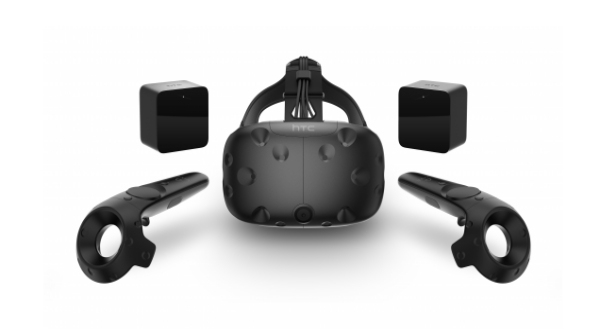Find Out If Your Computer Can Run The HTC Vive

Virtual reality is making a pretty huge comeback these days with a variety of headsets releasing this spring, this summer and this fall. The three major headsets include the Oculus Rift, HTC Vive and the PlayStation VR. For the PC headsets Valve has made a convenient tool available to test to see if your PC is capable of running VR.
PC Gamer links to a free app page on Steam that will allow gamers to play-test a virtual reality scenario to benchmark their PC and see if the hardware is capable of running VR at the appropriate resolution and frame-rate.
Now I know a lot of the media tries to dissuade gamers from thinking that resolution and frame-rate are important, but rest assured that they are mandatory standards and requirements in VR to prevent motion sickness, headaches or epilepsy. Most of the headsets will not run a resolution below 1080p because you risk damaging your eyes on blurry or jagged assets while trying to force-focus on objects. Additionally, VR programs often do not run below 60 frames per second, lest there are serious possibilities of running into complications with motion sickness due to the lack of smoothness that your brain is used to processing in real-life when you move around. For everyone out there thinking that the human eye can't see past 30fps and the human brain can't process movement beyond 30fps, you really can't experience VR at only 30fps unless you want to get sick and stay sick.
With all that said, the ability to process high-end games and products at 60fps or higher (many VR headsets run at 90hz or more to allow for anywhere between 90fps to 120fps for rendering) requires a lot of horsepower. There are threads over on Reddit that PC Gamer links to where gamers are sharing their benchmark results, and it's made pretty clear that you really need some high-end hardware to run the Vive or other SteamVRcompatible headsets.
The benchmark will determine in three simple steps whether your PC is ready for VR or not, with the red meaning “Not Ready”, yellow meaning “VR Capable” and green meaning “VR Ready”.
So what's the standard specs that you'll need to run a VR headset? At the bare minimum a 2.4ghz duo core CPU, but a quad-core at 3.4ghz will set you on your way to being “VR Ready”. Anything higher is just icing on the cake.
The OS isn't that big of a deal but you can get by with a 64-bit version of Windows 7. Many of the benchmark tests appear to be running Windows 10, so anything in between should be good to go.
CINEMABLEND NEWSLETTER
Your Daily Blend of Entertainment News
The GPU is where a lot of people had problems. Just to give you an idea of how much graphics processing horsepower you'll need to operate something like the HTC Vive or Oculus Rift, someone using a GTX 750ti was just way too slow, the same with the Radeon HD 7800 series. It's interesting because that's a higher grade card than what's comparably in the Xbox One, and a slight grade behind to what's comparably in the PS4.
According to the benchmarks, an ATI R9 380 series is “VR Capable” but not “VR Ready”. The R9 290 seemed to be “VR Ready”, along with the GTX 970, the latter of which is actually the standard recommendation for the Oculus Rift.
Ultimately, the HTC Vive's $800 price tag does not guarantee entry into VR gaming. Just like with the Oculus Rift or Gear VR, you'll still need a high-end rig to play virtual reality games, and those upgrades could cost you almost as much or more than the headset itself.
Staff Writer at CinemaBlend.
Your Friends And Neighbors Has Already Been Renewed For Season 2, And It Might Come Sooner Than You'd Guess
After Glen Powell Went Viral At His Sister's Wedding, He Posted The Cutest Recap About It: 'I Couldn't Be Happier'
Sinners Has An Amazing Michael B Jordan Performance, But He's Not The One I Left The Movie Thinking About










